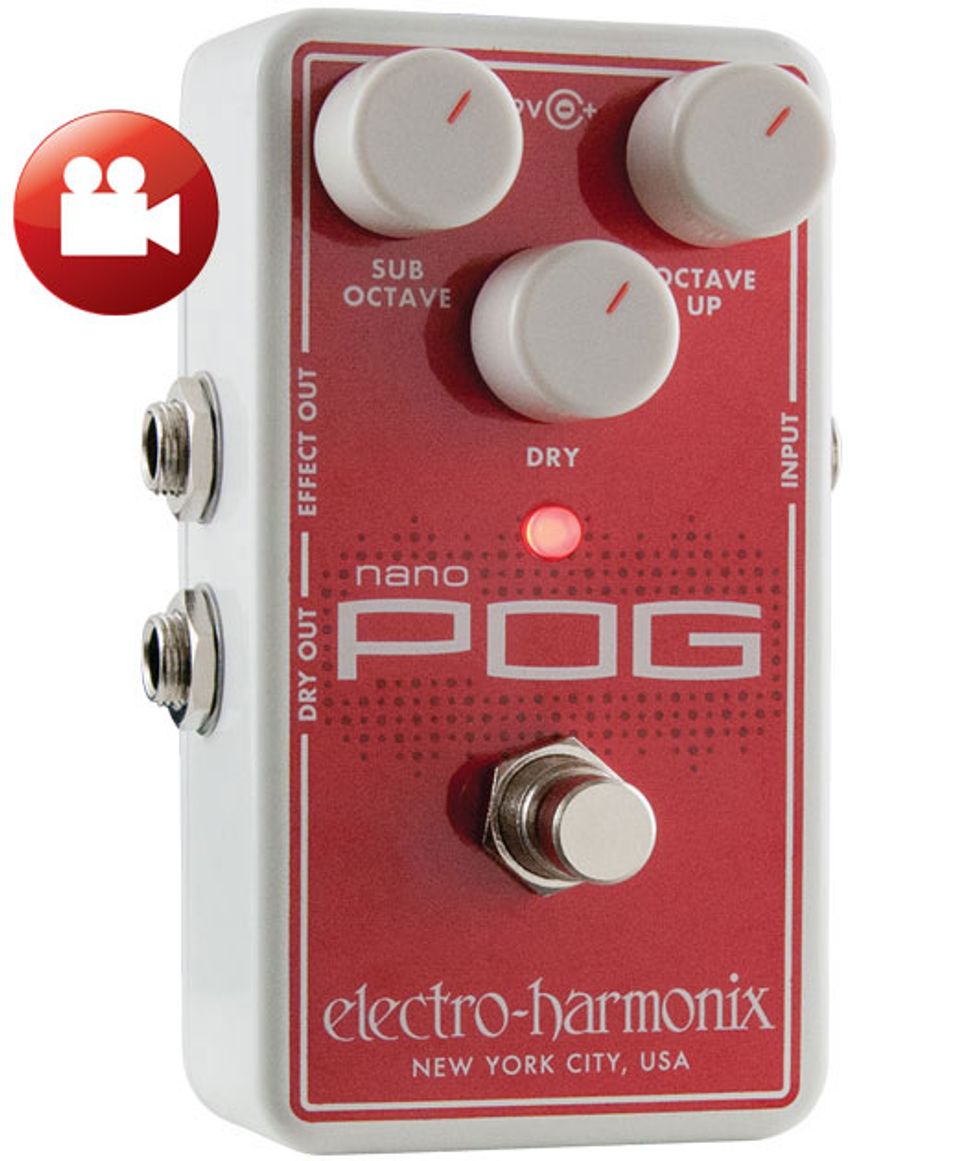
The latest addition to EHX’s POG family is basically a Micro POG in a smaller B-sized enclosure. Both pedals are stripped-down spinoffs of EHX’s flagship POG2, which provides harmonizations one and two octaves above and below the direct signal. Nano offers simple octave-up and octave-down sounds and omits the POG2’s slow-attack control, low-pass filter, detuning, and preset-storage ability. You can power the pedal via 9V battery or the included AC adapter.
The Fine Line Between Stupid and Clever
Nano may be a dumbed-down POG2, but it’s been dumbed down brilliantly. The only controls are level pots for the dry, octave-up, and octave-down signals. You can’t filter or otherwise modify the transposed tones, but the default settings tend to yield fine results. You can send mixed tones to your amp in mono, or use the independent dry/direct outs to route octave sounds to a second amp or straight to the board.
Like all POGs, Nano is digital. Its octave sounds have a touch of latency, but when you mix in dry signal, the note attack renders delays nearly imperceptible. Skilled players could make even 100% wet sounds seem instantaneous by playing slightly ahead of the beat—but you needn’t be a refined player to get great results here.
All Levels Welcome
Nano’s tracking is remarkably forgiving. It’s polyphonic, so if you inadvertently strike an adjacent string while playing a single-note melody, you won’t get a glitchy hiccup as on many pitch-tracking effects. Most players won’t need to refine their touch, or even concentrate—these octave effects simply work. I’d be surprised if a beginning player couldn’t immediately create cool sounds.
Ratings
Pros:
Near-foolproof octave effects. Excellent polyphonic tracking.
Cons:
Octave-up tones sound inorganic.
Tones:
Ease of Use:
Build/Design:
Value:
Street:
$202.90
Electro-Harmonix Nano POG
ehx.com
Ups and Downs
These preset sounds work well in many applications. Bass transpositions are deep and fat, with a percussive attack suggesting a bass played pickstyle. If, say, you’re in a guitar-and-drum duo, you can definitely shake floors with low frequencies, given proper amplification.
Octave-up transpositions are less organic-sounding—they have the bleating, grainy quality you expect from inexpensive, low-res processors. Marketing claims notwithstanding, blended tones sound nothing like a 12-string guitar, though they might pass muster for tossed-off 12-string parts on a casual cover-band gig.
But it’s probably misguided to focus on how well Nano fakes other instruments when it does so much cool stuff in its own right.
Hail the Noise Gods!
No surprise that POGs have became favorites among players who dig raucous, noisy sounds. They may not provide realistic 12-string tones, but they excel at mimicking volcanoes, earthquakes, and general Götterdämmerung. Run Nano into a good fuzz and just stand back! I even connected a fuzz before Nano, and the darn thing still tracked—and sounded—great. Fancy a bit of the old ultra-violence? Step this way.
The Verdict
Nano POG is a simple yet powerful octaver that hits the sweet spot on all fronts: range vs. ease of use, fidelity vs. funkiness, and price vs. performance. It’s compelling enough to excite experienced sound-sculptors, yet simple enough for beginners.
Watch the Review Demo:



























